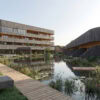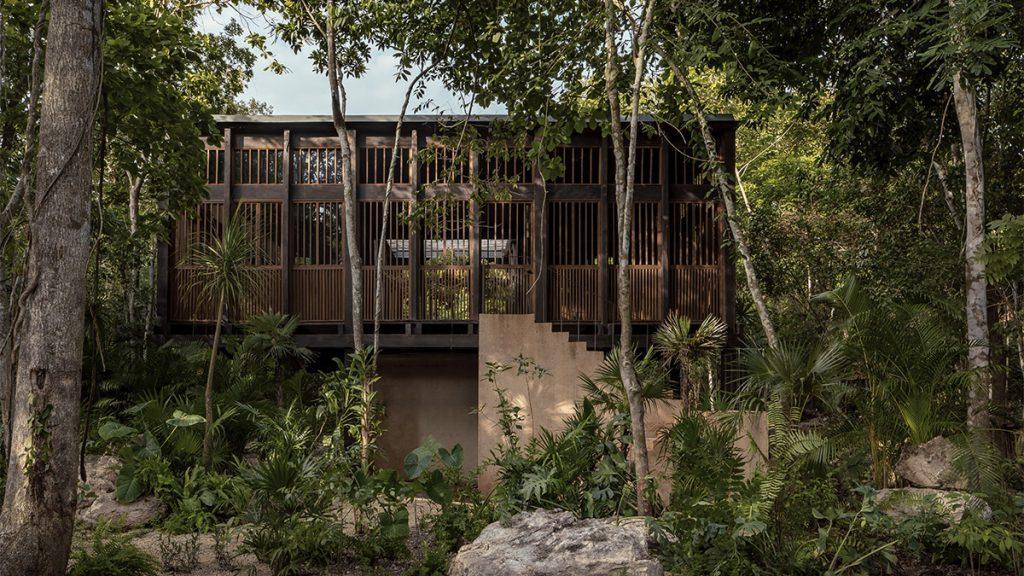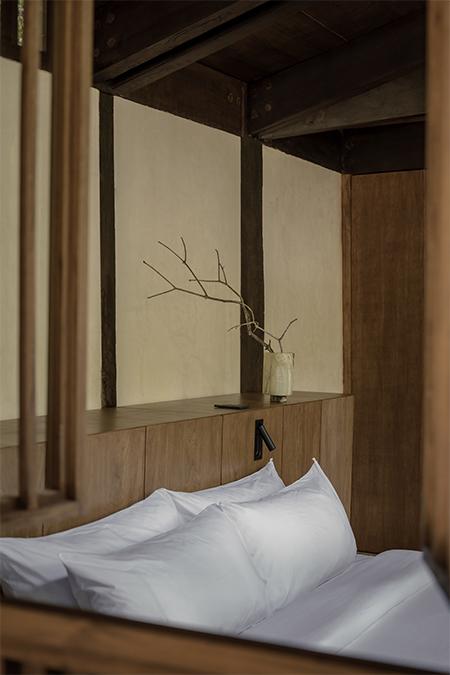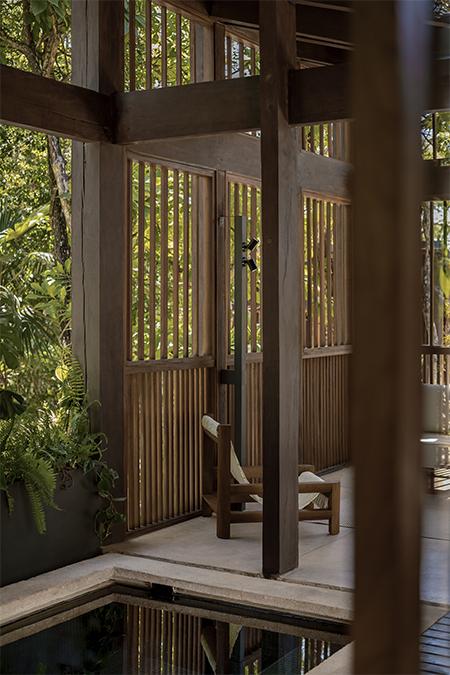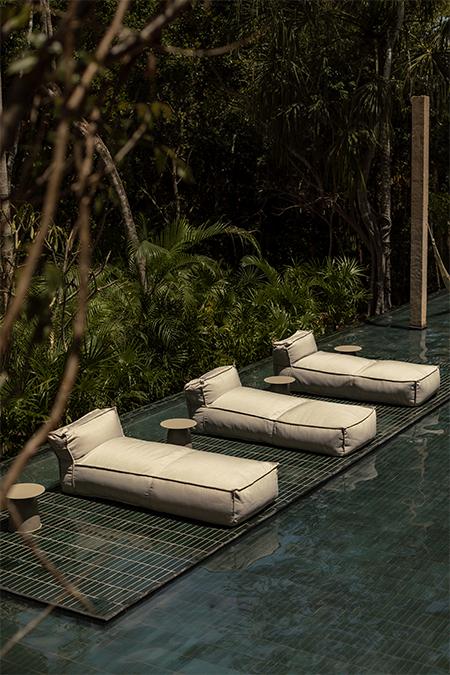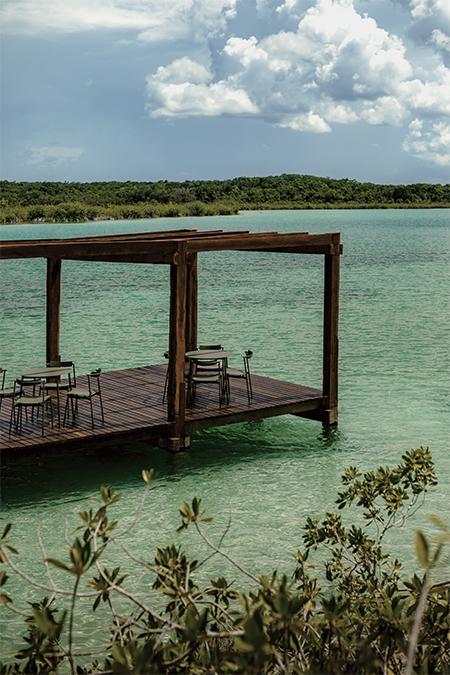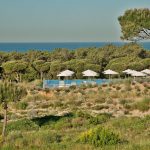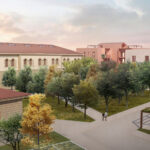With the Boca de Agua hotel project, architect Frida Escobedo has placed a facility with special magic at Mexico’s Laguna de los Siete Colores: Guests stay in tree houses made of wood and stone, which are completely focused on sustainability and regeneration.
The fact that the small town of Bacalar, located on the Yucatán Peninsula, bears the title of “Pueblo Mágico” sounds promising. After all, Mexico’s Secretariat for Tourism explicitly awards this distinction to towns that shine with their typical and well-kept character. However, Bacalar’s surroundings with their tropical vegetation and the beautiful Laguna de los Siete Colores (Lagoon of the Seven Colors) are also considered “magical”. And it is precisely there, in the middle of the greenery and close to the shore of the lake, that visitors will soon find even more magic. Because in November 2023, the new, extraordinary Hotel Boca de Agua will open its doors.
Tree houses & soil conservation
Designed by renowned Mexican architect Frida Escobedo and hidden in dense greenery, the Boca de Agua fascinates not only with its unusual architecture. That a place was to be created here that would contribute to ecological, social and cultural regeneration and offer visitors an equally regenerative, unique experience is palpable just by looking at it: the 26 accommodations are in tree houses resting on pillars. And what gives guests the extra feeling of virtually floating in the treetops also serves to protect nature. This leaves the ground undeveloped, which in turn reduces the environmental impact.
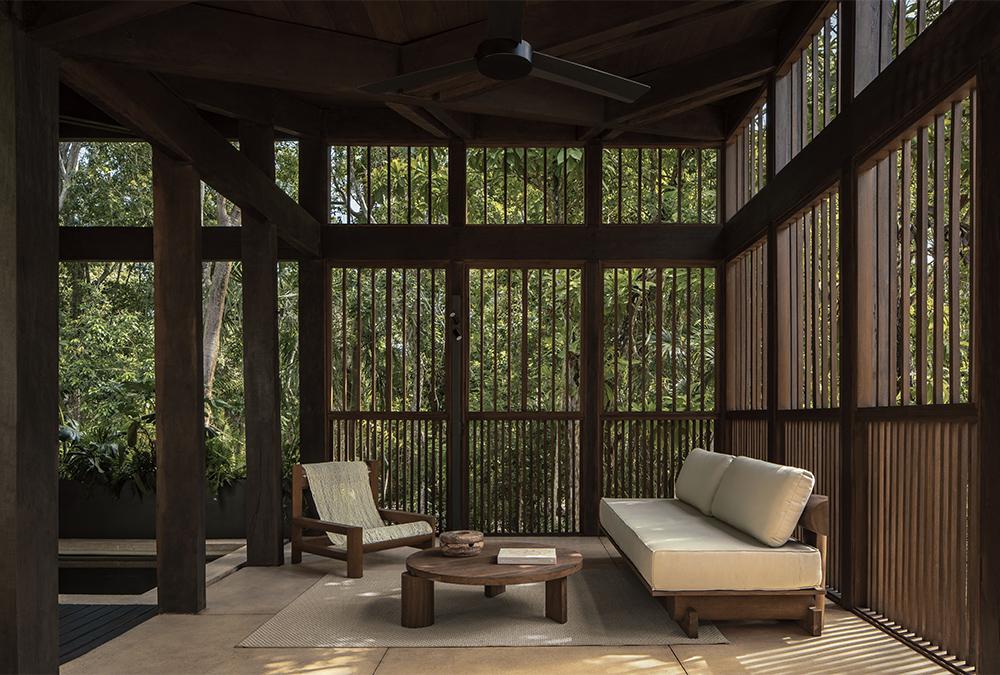
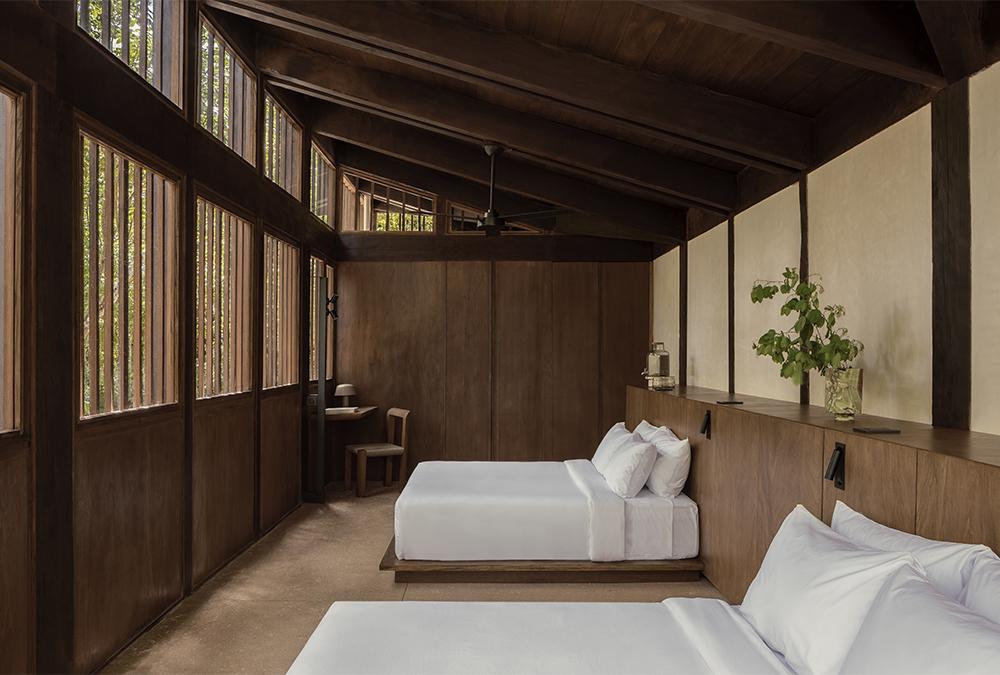
Thanks to the pile construction, more than 90 percent of the site remained intact during the construction of the hotel buildings. Escobedo and the developers of the Boca de Agua also paid attention to sustainability when it came to building materials: The facility is made of wood and stone. Designed in such a way that it will age naturally over the years and, as it were, make its own history visible.
Sustainable wooden structure
Native Chicozapote wood from a forestry program certified by the FSC (Forest Stewardship Council) was used. The tree species, which is widespread in the region, is valued locally above all for its edible fruit and as a donor of raw material for latex production. Its wood, although considered difficult to work, is hard and extremely durable.
Recycling „meets“ Brand design
Most of the furniture at Boca de Agua was designed by an in-house team and local craftsmen. And it was done using recycled waste from surrounding industrial companies, such as leftover wood from a regional plywood factory. But exclusive pieces from Mexican and local brands, such as light fixtures by Bandido Studio, , furnishings and décor details by Cacao Design, Nossara Towel and Hacha Ceramics also characterize the comfortably simple interior.
The 22 suites and four guest rooms are dominated by wood, soft neutral tones and lots of natural light. This results in a relaxed ambience and actually allows the interiors to merge almost magically with the nature all around when looking outside. Not only that, but the Boca de Agua is designed so that guests can share the space with the largely intact jungle. Also with the wild animals that roam freely on the property of the complex.
Boca de Agua reflects Yucatán’s culture
The design of the facility acts as a modern reflection of the traditional social centers of the Yucatán region, with their stone temples and wooden houses. With references to local culture, the hotel’s common areas serve as visual anchors in the landscape. A series of passageways connects these spaces to the villas, pool area, and recreation and relaxation zones.
Recreation with “conscious” extra
In addition to its villas, the Boca de Agua naturally also has amenities such as a pool, roof terrace overlooking the lagoon, its own jetty, restaurant, bar and terraces. Activities of all kinds are also provided at the “magical” hotel – from “treehouse massages” to kayak or sailing tours. In addition, guests can also participate in local projects if they wish. And there are many such projects.
Boca de Agua is cooperating with the local community, local universities, regional non-governmental as well as governmental organizations to develop what is currently the only project with a rehabilitated mangrove ecosystem by the sea in Bacalar. The hotel also partners with the non-profit organization Mono Araña, which researches the behavior of the resident spider monkeys and works to protect and expand their natural habitat. And it underscores its commitment to sustainable and environmentally friendly practices through a partnership with Ammper for Renewable Energy..
Environmental responsibility in action
The hotel project, so grandly designed by Architektin Escobedo , is intended to make a positive contribution to social inclusion, local economic development and nature conservation within the framework of regenerative tourism. The goal: lived environmental responsibility that allows for special, inspiring experiences. It is only logical, then, that a special-purpose wastewater treatment plant has been installed on the premises to ensure that no waste enters the lagoon.
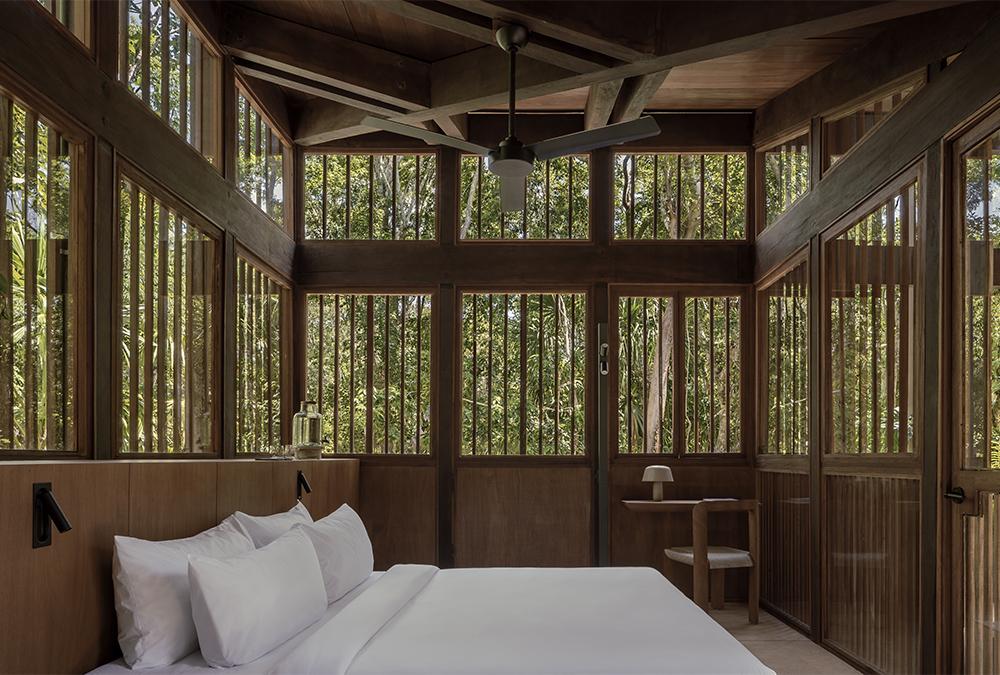
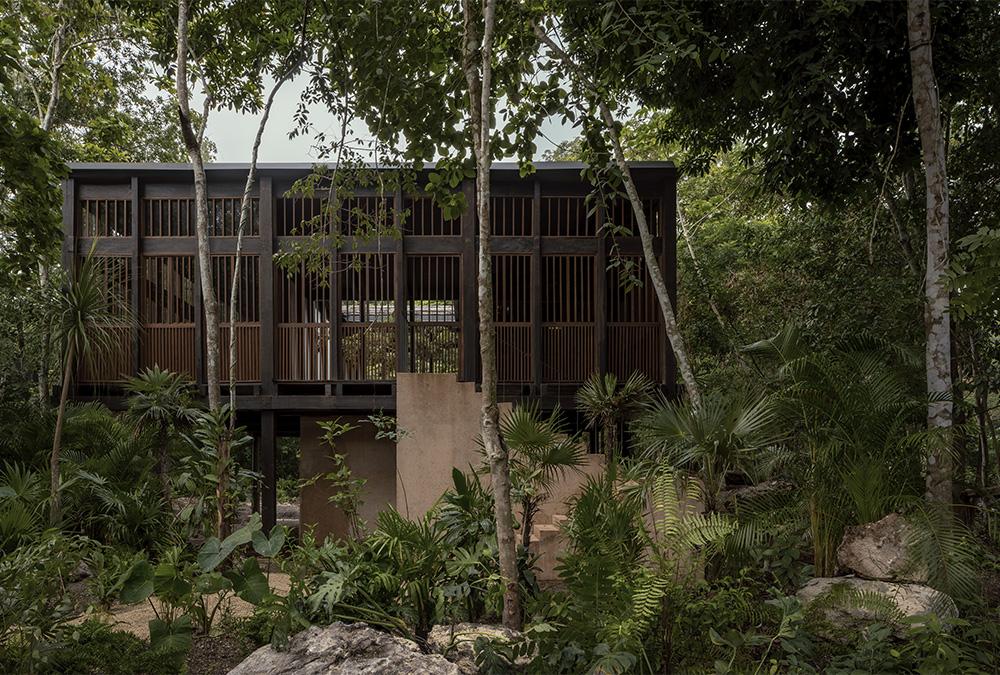
A specialty of Boca de Agua is scientifically backed therapeutic programs, which include nature therapies. Ancient rituals are complemented by modern scientific knowledge. These special methods are designed to allow guests to experience healing and restorative powers of the earth for themselves through guided explorations of the natural environment. The seclusion of the resort is seen as an advantage in helping to find healthier and more sustainable sources of satisfaction.
Indulgence, local & organic
It goes without saying that the operators of the Boca de Agua also focus on regional cuisine: The resort’s restaurant serves Yucatecan cuisine enhanced by international influences – prepared from local organic products.
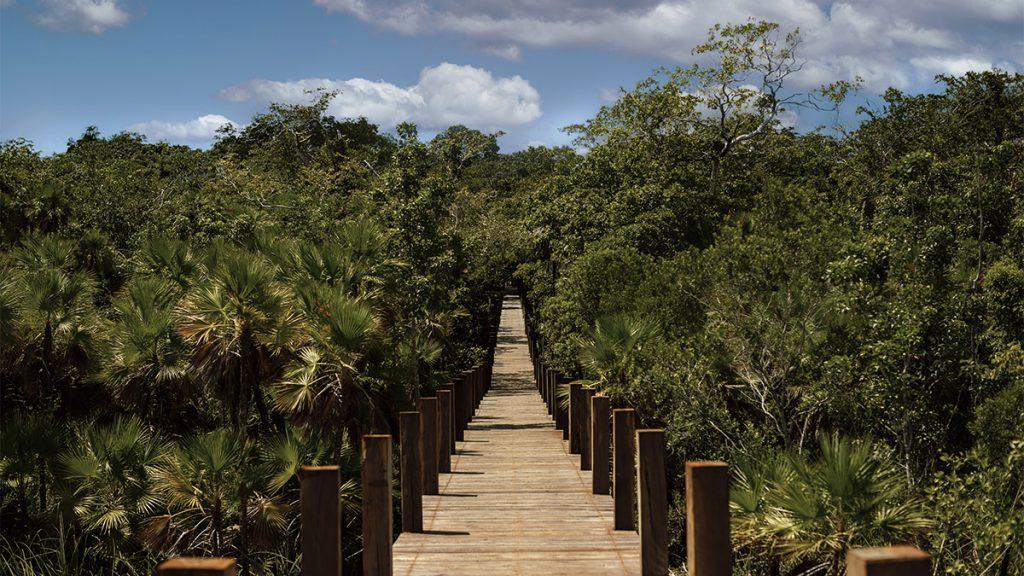
The hotel, which is built of wood and focused on sustainability, is another exciting destination for environmentally conscious travelers in Mexico. Other new resorts with a similar philosophy include the exclusive „One&Only Mandarina“ on the Riviera Nayarit and the Brutalist-inspired „Terrestre“ near Puerto Escondido. It may be that Boca de Agua will not quite measure up to these two in terms of luxury. But the magic that the design and location of the new “tree house” hotel so impressively convey is fascinating – and has what it takes to expand the designation “luxurious” to include its own new and future-oriented category.
Text: Elisabeth Schneyder
Bilder: Boca de Agua / Frida Escobedo



